Related Research Articles

Sopot is a municipality of the city of Belgrade. According to the 2022 census results, the town has a population of 1,956 inhabitants while the municipality has 19,126 inhabitants.
Miodrag B. Protić was a Serbian painter, art critic, theorist and historian of art of the 20th century.

The Nikola Tesla Museum is a science museum located in Belgrade, Serbia. It is dedicated to honoring and displaying the life and work of Nikola Tesla as well as the final resting place for Tesla. It holds more than 160,000 original documents, over 2,000 books and journals, over 1,200 historical technical exhibits, over 1,500 photographs and photo plates of original, technical objects, instruments and apparatus, and over 1,000 plans and drawings. Very little is on display in the small ground floor exhibition space.

The National Museum of Serbia is the largest and oldest museum in Belgrade, Serbia. It is located in the central zone of Belgrade on a square plot between the Republic Square, formerly Theatre Square, and three streets: Čika Ljubina, Vasina and Laze Pačua. Its main facade is on the Republic Square and the official address ia 1a Republic Square.
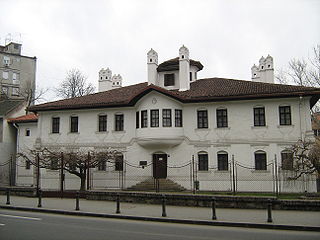
The Belgrade City Museum is a museum located in Belgrade, Serbia. Founded in 1903, the museum operates with several cultural institutions: Ivo Andrić Museum, Princess Ljubica's Residence, Paja Jovanović Museum, Banjica Concentration Camp Museum, Collection of Icons Sekulić, Archaeological Site Vinča and Jovan Cvijić Museum.
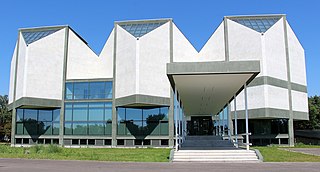
The Museum of Contemporary Art is an art museum located in Belgrade, Serbia. It was founded in 1958 as the Modern Gallery, making if one the first museums of this type in the world. It was moved into the current building in the Ušće neighborhood of New Belgrade in 1965. The building is a masterpiece of architects Ivan Antić and Ivanka Raspopović, a short-lived but highly successful partnership, which also produced the 21 October Museum in Šumarice Memorial Park in Kragujevac. The collection contains more than 35,000 works of art.

The Museum of Natural History is a museum located in Belgrade, Serbia. It is one of the oldest specialized national institutions in Serbia, and is the only museum of this type in Serbia.
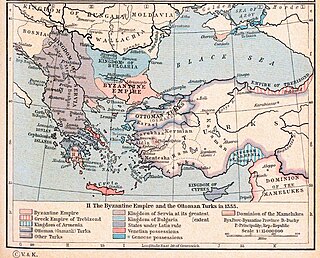
The best known cultural archaeological discoveries from the prehistoric period on the territory of modern-day Serbia are the Starčevo and Vinča cultures dating back to 6400–6200 BC.
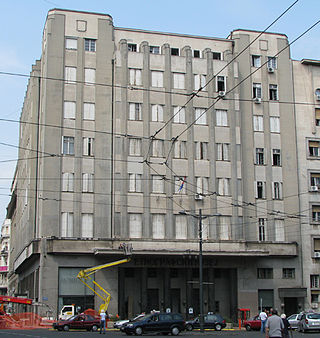
The Ethnographic Museum is a museum located in Belgrade, the capital of Serbia. It is one of the oldest museums in the Balkans. The Ethnographic Museum in Belgrade fulfills its mission together with the efforts of various stakeholders in the domain of presentation, revitalization and development of crafts in Serbia.

The Museum of Yugoslavia is a public history museum in Belgrade, the capital of Serbia. It chronicles the period of Kingdom of Yugoslavia and Socialist Yugoslavia as well as the life of Josip Broz Tito. Tito's grave is located in one of the museum buildings.
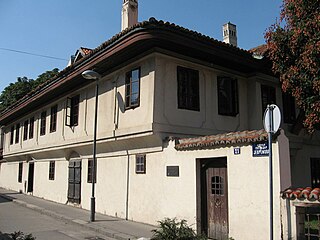
The Museum of Vuk and Dositej is one of the most important memorial museums in Belgrade, the capital of Serbia. Founded in 1949, it depicts the life, work and legacy of Vuk Stefanović Karadžić (1787–1864), the reformer of the Serbian language, and Dositej Obradović (1742–1811), a writer who was the country's first Minister of Education. The museum is a crucial site for understanding the revival of Serbian culture at the time of the First Serbian Uprising against the Ottoman Empire. Since 1979, this institution has been governed by the National Museum of Serbia.
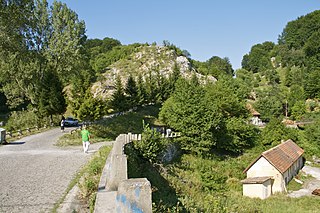
Senjski Rudnik is a village located in the municipality of Despotovac, eastern Serbia. According to the 2011 census, it had a population of 438 inhabitants. It is the site of the oldest preserved coal mine in Serbia, established in 1853. The mine marks the beginnings of the industrial revolution in Serbia.

The Jewish Historical Museum is a museum located to the southeast of Kalemegdan, Stari Grad, Belgrade. Founded in 1948, it is the only Jewish museum in Serbia. The museum is situated in a building constructed in 1928 for the Sefardic community. The museum's collection is comprehensive and also complex in its content, with exhibits arranged thematically.

The Historical Museum of Serbia is a public institution dedicated to documentation of history of Serbia from prehistory up to the present. The museum was established in 1963 and today it preserves over 35,000 exhibits in its collection. Over the years the museum was located at different locations around the capital city of Belgrade. In 2020, as a part of the Belgrade Waterfront development project, the museum was granted the historical building of the Belgrade Main railway station as its new permanent base. The museum is one of the leading institutions of its kind in the city and the country.

The Officers' Club in Belgrade, Serbia is situated at 48 Kralja Milana Street and as the memorial of the development of Belgrade at the end of the 19th century it has the status of a cultural monument.

Jovan Cvijić's house is situated in Belgrade, in 5 Jelena Ćetković Street. The house was built in 1905, on the site of the former garden of Мitropolit Mihailo of Belgrade, which in 1907 was transformed into the square. A couple of years later, more precisely in 1924, the square was named Коpitareva gradina, after the famous Slavist and linguist, Јеrnej Kopitar. Many important figures of that time used to build their houses in this area: a sculptor Petar Pavličanin, a doctor and a writer Laza Lazarević, an architect Milan Antonović.
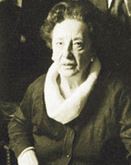
Draga Garašanin was a Serbian archaeologist who studied the Copper and Bronze Age of eastern Europe. She became one of the leading prehistorians of Yugoslavia, later Serbia, after World War II and with her husband produced the first map of archaeological sites in Serbia.
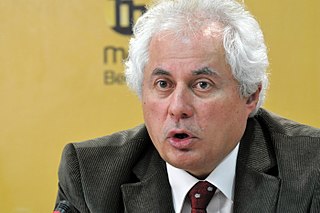
Ljubodrag Dimić is a Serbian historian, university professor and since 2012 member of Serbian Academy of Sciences and Arts. His primary fields of study are: history of former Yugoslavia, history of the Cold War, modern political, social and cultural history of Serbia and contemporary national history of Serbian people.

Rade Uhlik, Bosnian-Herzegovinian romologist, linguist, academic and writer.
Dimitrije Posniković was a Serbian iconographer and painter from the 19th century. A student of Dimitrije Avramović, with whom he sometimes collaborated on commissions, Posniković mainly painted icons and frescoes for churches in Serbia.
References
- 1 2 3 Малиш, Б. (20 October 2009). "Сутра се отвара Музеј ромске културе". Политика. Retrieved 26 February 2020.
- 1 2 3 "Muzej romske kulture u novom prostoru na Karaburmi". Zvanična prezentacija. Grad Beograd. Retrieved 27 February 2020.
- ↑ "Prvi Muzej romske kulture u Jugoistočnoj Evropi od 21. oktobra u Beogradu". eKapija. 17 October 2009. Retrieved 27 February 2020.
- 1 2 "Romski muzej na Karaburmi". SEECult. 21 October 2011. Retrieved 27 February 2020.
- 1 2 3 "Muzej Romske kulture slavi rođendan". B92. 21 October 2012. Retrieved 27 February 2020.
- ↑ "Muzej romske kulture, Beograd". Tamo daleko. Retrieved 27 February 2020.
- ↑ "Теткица Бибија". Нематеријално културно наслеђе Србије. Министарство културе и информисања РС и Етнографски музеј у Београду. Retrieved 27 February 2020.